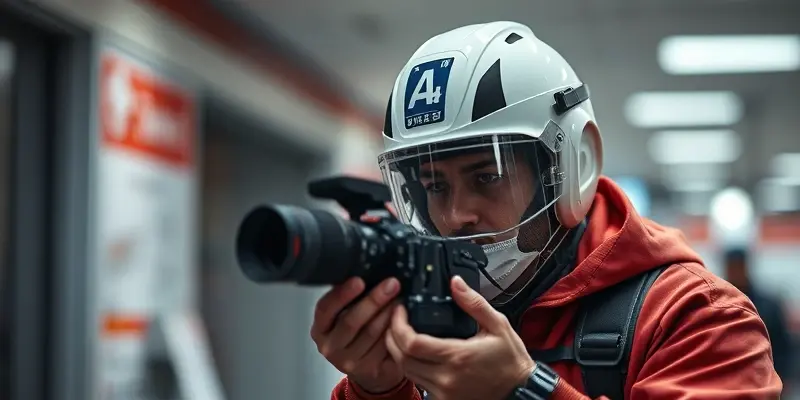How Visualization Supercharges Recovery & Injury Prevention: A Practical Guide for Fitness Enthusiasts
Injuries can stall even the most dedicated athlete’s progress. But what if you could use the power of your mind to accelerate healing and prevent future setbacks? Enter visualization—a mental technique that’s gaining traction for its science-backed benefits in recovery and injury prevention. Whether you’re new to fitness or an elite competitor, mastering visualization can be a game-changer.
What Is Visualization?
Visualization is the practice of creating vivid mental images to rehearse movements, reduce anxiety, and boost confidence. Picture yourself nailing a lift, landing a jump safely, or feeling your injured tissue repairing. This isn’t just positive thinking—when done right, it actively trains the brain and body for success.
The Science Behind Visualization for Recovery
Wondering how simply imagining something could help your muscles or ligaments heal? Research shows that visualization activates the same neural pathways used during actual movement. This keeps your motor skills sharp and encourages real physiological changes, even when sidelined:
- Mental rehearsal preserves coordination and reduces the risk of “forgetting” vital movement patterns.
- Healing imagery can decrease stress hormones, fostering an optimal environment for recovery.
- Pain management visualization helps shift your focus away from discomfort, making rehab less daunting.
How Visualization Prevents Injury and Aids Rehab
Visualization isn’t just wishful thinking—it’s a proactive tool:
- Prevention: Mentally practicing proper form reinforces safe technique, especially for common weak spots like ankles and knees. For example, picturing yourself executing a perfect squat with stable knees can help prevent future strain.
- Rehabilitation: Visualizing the healing process, successful physiotherapy sessions, and a triumphant return to sport can keep motivation high and speed up tissue repair. This aligns well with our injury recovery checklist techniques that emphasize a holistic approach to rehab.
Beginner-Friendly Visualization Techniques
Getting started is easier than you think. Try these beginner strategies—just 5–10 minutes daily is enough:
- Healing Visualization: Close your eyes and imagine the injured area glowing with health, inflammation receding, and tissues knitting back together.
- Movement Imagery: Picture yourself performing a key exercise (like a controlled lunge), focusing on how your body feels at every step.
- Pain Control: Imagine your pain as a color or shape—watch it shrink or drift away with each breath.
Speak your visualizations aloud or write them down for extra impact.
Combining Mental and Physical Recovery Tools
Pair visualization with proven recovery gear for best results:
- Foam rollers, massage guns, or compression sleeves: As you use them, mentally focus on the muscle relaxing and rebuilding.
- Physical therapy sessions: Before rehab, visualize yourself completing every rep with ease and strength.
Intention amplifies these tools’ power, turning routine into ritual.
Nutrition Tips to Support Healing
Visualization won’t replace a solid nutrition plan, but combine both for a winning edge:
- Protein supports muscle and tissue rebuilding.
- Antioxidants (think colorful fruits/veggies) fight inflammation. Learn more about the benefits of antioxidants in recovery in our post on antioxidants in sports nutrition.
- Micronutrients like vitamin C, zinc, and magnesium are vital for recovery.
Picture your body drawing in these nutrients as you eat—believe it or not, this mindful approach can support consistency in maintaining healthy habits.
Staying Motivated During Recovery
Injury can hit your confidence hard. Visualization helps keep your head in the game:
- Imagine yourself returning stronger or achieving a new milestone.
- Practice “scenario visualization”—picture overcoming challenges and setbacks in competition or training.
Studies show these mental strategies foster resilience and reduce anxiety, decreasing your risk of burnout.
A Real-World Example
Meet Alex, an amateur soccer player sidelined by a knee injury. Alongside standard rehab, he spent 10 minutes every morning visualizing successful physical therapy sessions and playing pain-free. Combined with steady nutrition and daily foam rolling, Alex returned to training ahead of schedule—more confident and coordinated than before.
Conclusion: Your Recovery Toolkit
Visualization is more than a buzzword; it’s a practical, evidence-backed strategy for injury recovery and prevention. By integrating mental rehearsal with physical tools and smart nutrition, you’re equipping yourself to heal faster, move safer, and stay motivated. Why not add visualization to your daily routine and see the difference for yourself?
Ready to harness your mind for better recovery? Give visualization a try and share your experience with the GymPulse Club community!

